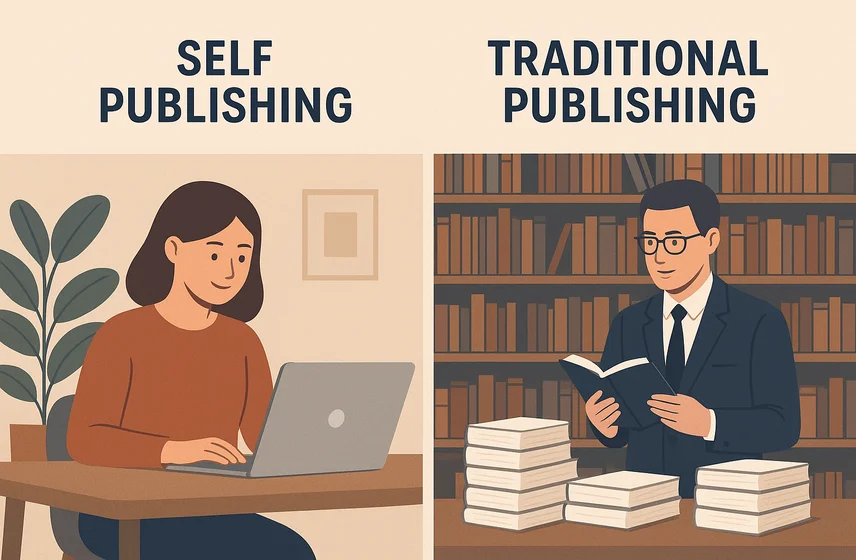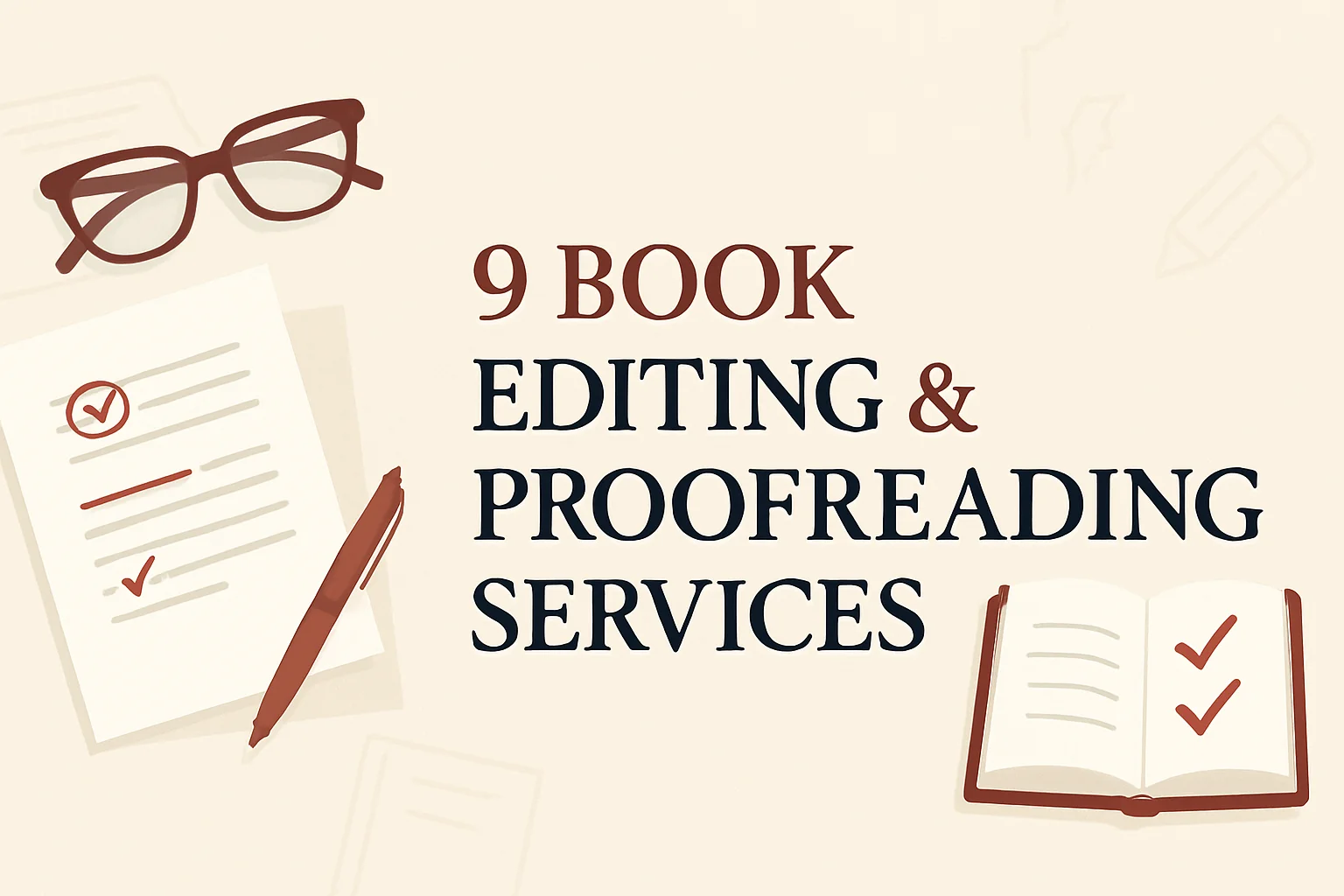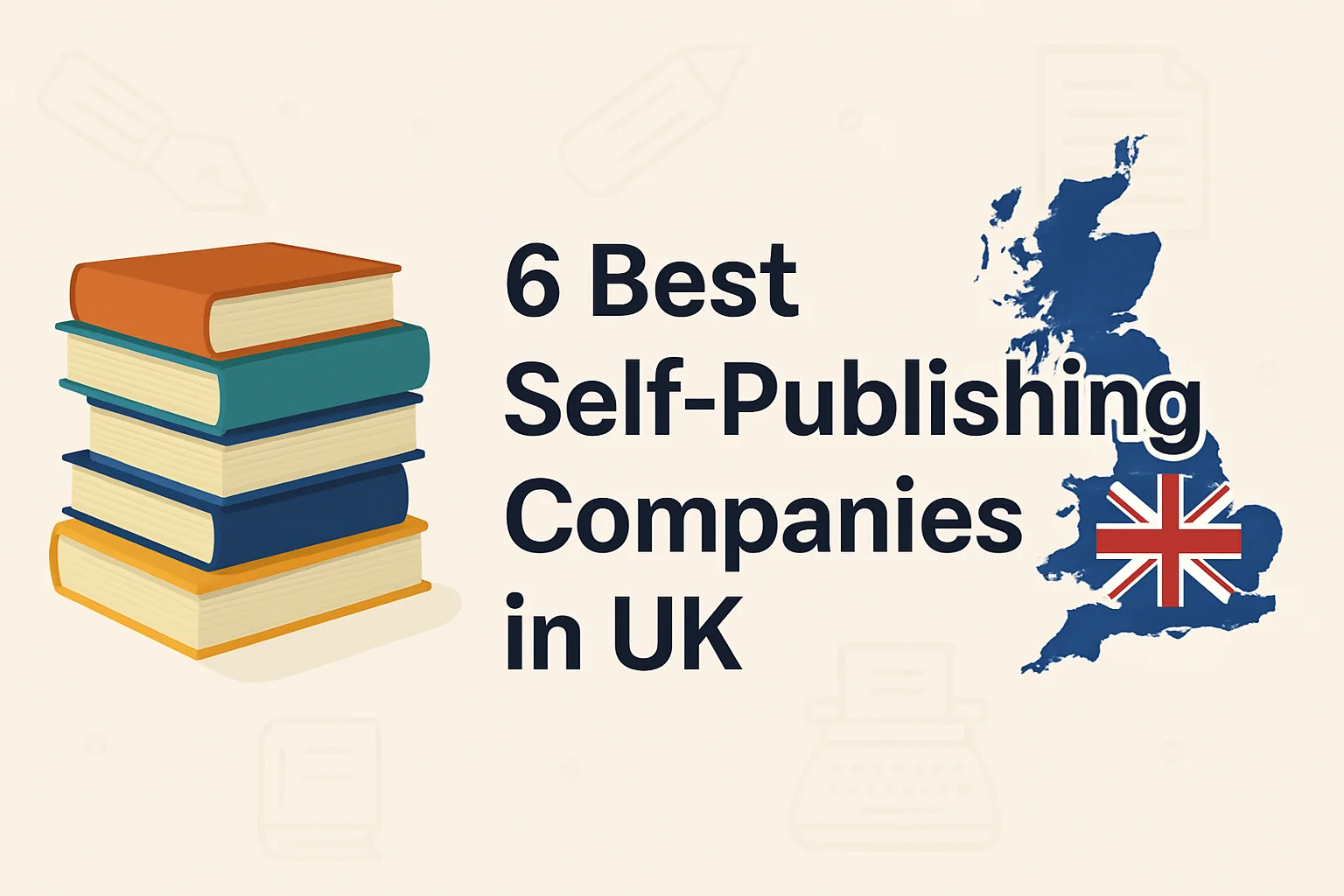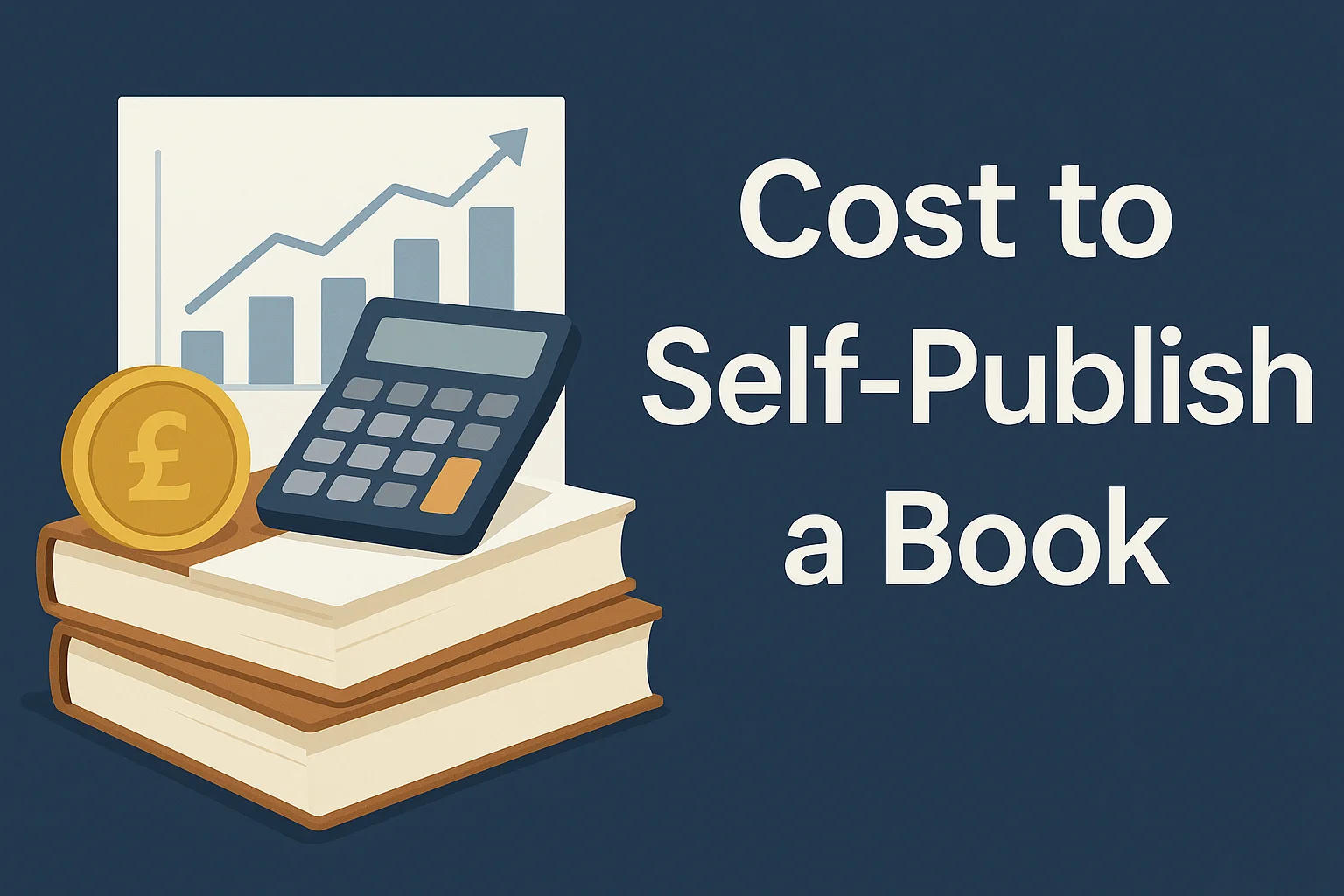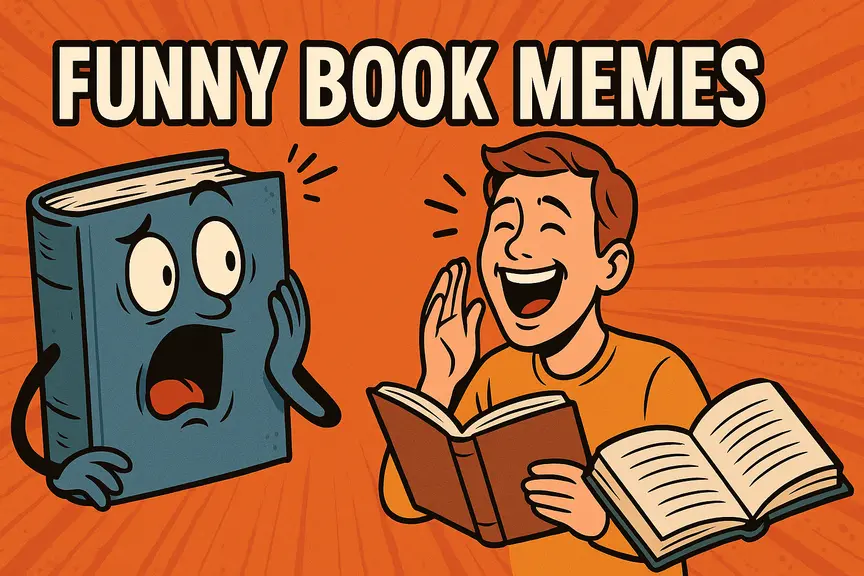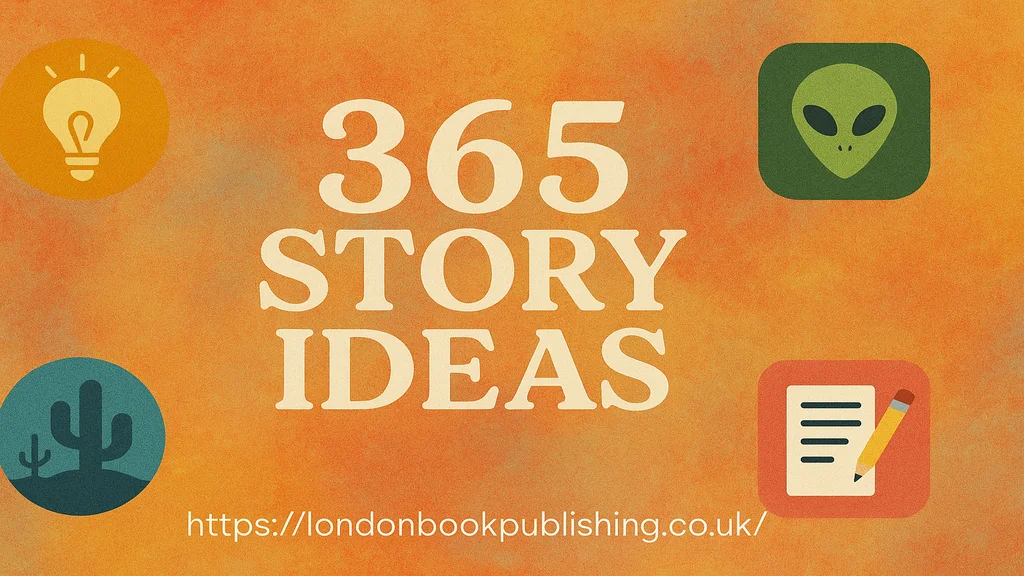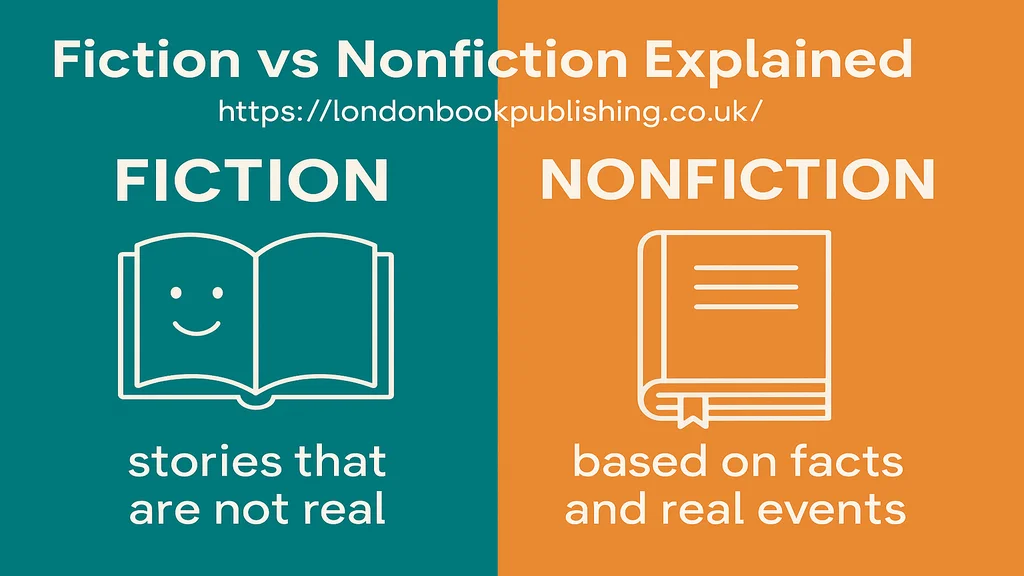In the debate between self-publishing and traditional publishing, there is no one perfect option. It all depends on your book and your choice.
During the process of publishing, there are many things to consider. You are likely reading this article because you want to choose the best publishing method for your book.
Moreover, this side-by-side analysis includes the major differences that will assist you in choosing the most suitable publishing method for your book.
How do these publishing methods work?
Before I begin with the debate of self-publishing vs traditional publishing,
Let me first give a detailed overview of how these methods work:
Traditional publishing:
-
First authors craft, refine, and review the book, and then they query literary agents. After that, the literary agents pitch your book to the editors in the publishing house.
-
Moreover, if the publisher accepts, the author signs a contract. In this step, the author can also receive an advance payment against future royalties. Next, the publisher works with the author to edit, design, and proofread the text. Also, they handle book cover designing and formatting. Then , the publisher distributes your book to the book stores and online retailers.
-
After the advance earns out, you start receiving 7% to 25% royalties.
If we understand it briefly, then the publisher is the one who invests more in your book, earns more, but then provides credibility, editing, and distribution support.
Self-publishing:
-
The author writes and edits the book. Later, the author can also hire some proofreaders, a book cover designer, and formatters to refine it more.
-
Next, authors upload their books to platforms like Amazon Kindle Direct Publishing, which offers a print-on-demand service. Moreover, as the owner of the book, you set the price, and the platforms usually pay 35%-70%.
-
To understand it briefly, as you are the owner, you are responsible for everything, and you also keep most of the earnings.
A thorough side-by-side analysis:
-
Who really controls your book?
Traditional publishing:
In traditional publishing, once you sell your book to a publisher, you lose the rights over it. Moreover, it means that now the publisher is controlling the major aspects of your book.
However, it doesn’t mean that they can transform your book into something entirely different, but it means they will decide your book cover, design, and how it will be marketed. Also, they can ask for your opinion, too, but there is no guarantee they will follow your opinion.
Self-publishing:
In the self-publishing process, you have complete control over your book. This is because you have all the rights to your book, and you are paying for everything.
Therefore, you decide the major aspects of the book, like book cover, design, editing, and choose the platform where you are going to sell the book.
Moreover, just one aspect where you don't have much control is the pricing. For example, if you are publishing your book on Amazon and you want their 70% royalty rate, then you must not sell your book for less than $2.99. However, if you want their 35% royalty rate, then you must sell your book for at least $.99.
-
Cost and financial investment: who pays the bills?
Traditional publishing:
In traditional publishing, the publishers cover production and offer an advance against royalties. The advances may vary. Moreover, the financial risk is lower for the author, but the earnings are split.
Self-publishing:
In self-publishing, authors pay for editing, designing, formatting ISBNs, and marketing; moreover, the cost can extend from a few hundred to several thousand dollars. Most authors spend $2,000-$4,000 to self-publish.
-
Earnings and royalties: how much can authors make?
Traditional publishing:
In traditional publishing, the author gets an advance against royalties, which are based on the percentage of the book sales. However, the percentage is lower compared to self-publishing.
The profitability and earnings are affected by the advance, the book’s sales performance, and the contractual royalty rates.
Self-publishing:
Meanwhile, in the case of self-publishing, earnings and profitability depend on the ability of the author to market the book and also on the platform on which they sell the book.
Platforms like Amazon offer royalty rates that can reach up to 70% for ebooks of the retail price. Moreover, it depends on the book’s price point and the platform.
-
Timeline to release: speed vs patience?
Traditional publishing:
The speed to market is slower. From acceptance to publication, it usually takes 12-24 months.
Self-publishing:
It is faster, published in weeks or months when the manuscript is ready. Moreover, it is great for authors seeking quick revenue, timely topics, and trends.
-
Book distribution: online platforms vs bookstore shelves
Traditional publishing:
The traditional publishers are related to a large range of retailers. Therefore, they enable broader distribution in most of the book stores. The advantage is that the established relationships of the publisher boost discoverability.
Self-publishing:
The author is responsible for the distribution of the book. Moreover, the success in this publishing method depends on the authors’ ability to market the book on social media, website, and other various channels.
Moreover, the author also decides the platform where the book has to be published, and the choice of print-on-demand services or the typical bulk printing of the books. The self-published books are harder to get into the physical bookstores, and the author may have to hire a distributor.
-
Editing, designing, and formatting:
Traditional publishing:
In this method, you get access to industry professionals, editors, and designers who make your book a polished final product.
Self-publishing:
The overall quality of the book depends on the investment. The editors and designers are available, but the author has to hire them. Despite the investment, this method is more profitable in terms of royalties.
-
Prestige and validation: which path builds more credibility?
Traditional publishing:
When your book is published by a reputable publishing house, it offers credibility, prestige, and validation.
Self-publishing:
Some readers doubt the quality of self-published books; therefore, there is a lack of prestige and credibility.
-
Rights and contracts: retain or share the control
Traditional publishing:
The contracts can be complex, and the publishers often acquire many rights. Therefore, the author should read the terms carefully and consider some legal advice.
Self-publishing:
The authors have full rights and control over editions, translations, and adaptations.
-
Marketing and platform: who handles the spotlight?
Traditional publishing:
The publishers assist in marketing and outreach. However, the author is still responsible for platform building.
Self-publishing:
The authors are responsible for the marketing, i.e, email lists, social media, and outreach. However, too much hard work is required in this process.
Who should choose which path?
Traditional publishing if: you want editorial support, bookstore distribution, prestige, and to rely on the publisher’s marketing.
Self-publish if: you want to control higher royalties, a faster timeline, and want to market your book yourself.
Questions to answer before selecting the publishing method:
-
How much time can you give to marketing and platform building each week?
-
What is your budget for editing, designing, and marketing?
-
Do you want your books in physical bookstores or just online?
-
Are you looking for prestige or direct reader income?
-
Do you want to retain rights?
-
How quickly do you want the book to reach the readers?
-
Can you negotiate contracts, or do you need a publisher to handle it?
Common myths:
1. Self-published books are of low quality. Fact: Many self-published books are professionally refined and also compete with traditionally published books.
2. Traditional publishing leads to high sales. Fact: Traditional publishing also relies on the platform building done by the author.
Reader reach and connection with the audience:
One of the major differences between traditionally published books and self-published books is the connection between the author and the reader.
Through a self-published book, the author builds a direct relationship through newsletter, online communities, and personal branding.
However, traditional publishing provides access to the audience through bookstores and libraries, but the author is not directly connected.
Long-term career growth:
The choice of the publishing method also affects your career path. Self-publishing can build a business mindset in the author, and they can treat their work as a small business.
Whereas traditional publishing can increase professional credibility and secure media interviews and recognition, etc.
Both paths lead to success, but they cater to different ambitions.
Final thoughts
The self-publishing vs traditional publishing debate is about tradeoffs. Moreover, evaluate your goals and choose the method that fits you.
Both methods can make your book successful, but it entirely depends on you and your goals.
